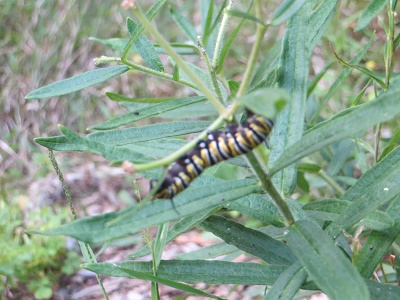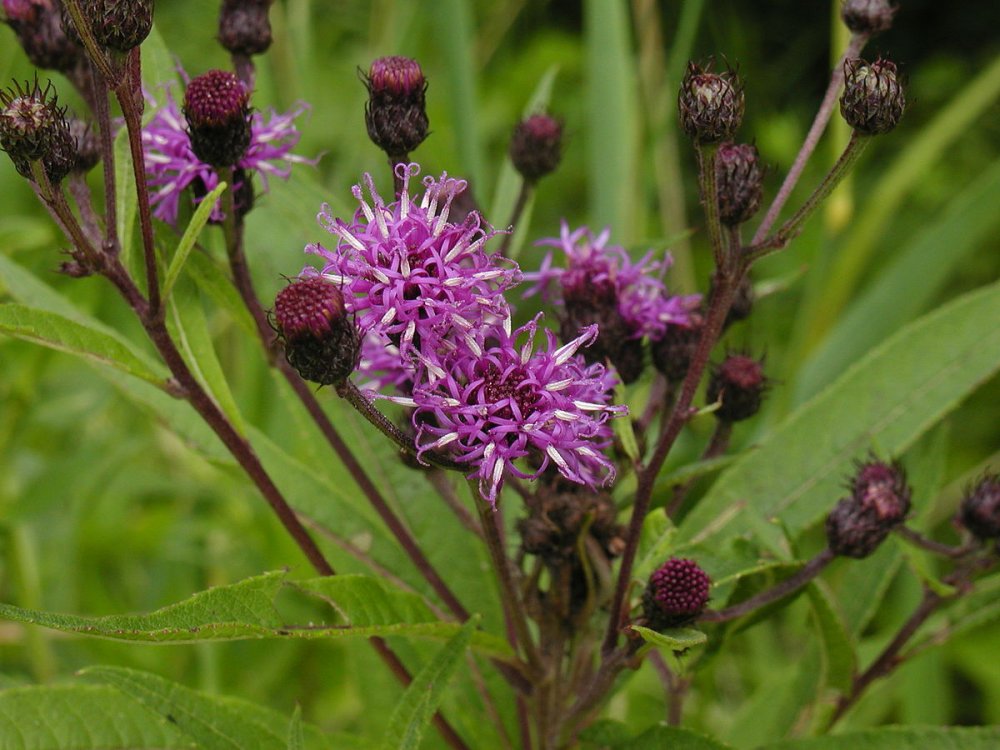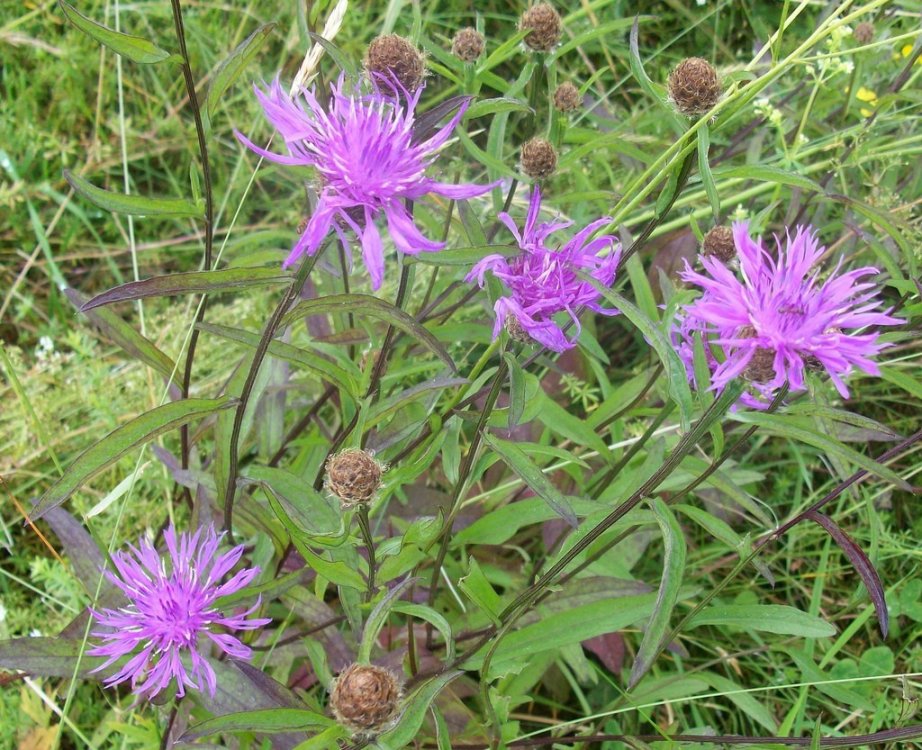-
Posts
6,192 -
Joined
-
Days Won
131
Content Type
Profiles
Forums
Events
Classifieds
Everything posted by lavender
-
untilThe Down to Earth Garden Club will be meeting Thursday, September 28 at 7:00 p.m. at Christ Lutheran Church, 875 Sunflower Drive. After a brief business meeting the group will be making cup and saucer bird feeders. Anyone who wishes to participate should bring a decorative cup and saucer and a spoon or fork to be used as a perch. All other materials will be provided. The workshop will be conducted by Pat Pannighetti and Sharon Bobal. For more information call 371-8672 or 375-9528, email downtoearthgardenclub@hotmail.com or visit the group’s web page at www.downtoearthgardenclub.org or check on Facebook
-
Huge cabbages!
-
The green seem to be hardier than the natives. It is just the opposite around here. We'll drive on anything but the greens don't do much even in the greenhouse. I had a friend who was all excited about growing kale all winter in an unheated greenhouse. It sat there and looked at her until spring.
-
Climate change is a normal thing for the planet. It is the concept that I am changing it by burning my trash and using hair spray that I find difficult to accept. I think they are reaching to find a man made reason for what is an normal phenomenon.
-
Tell me about it! That is about the time we moved to DuBois. The first year I got nothing because of the groundhogs and then for two or three years we ripened tomatoes in the basement and on windowsills because nothing ripened in the garden. We did get beautiful cabbages and broccoli though. Now the tomatoes ripen and the peppers grow but the spring crops are iffy. The climate seems to have changed in the last 20-30 years.
-
The cold nights aren't helping the tomatoes ripen and my eggplant is just starting to blossom. Going to be darned lucky if the weather holds long enough to produce eggplant.
-
I don't think there is any in the plant collection at the moment but we might have some next spring. It usually sells out. I can probably get you some seeds later on when they are ripe. My big plant didn't come back after last winter (it was really old) and I have only a small one started but we have them scattered around in various beds. They can't be divided but have to be dug in their entirety. There is a monarch caterpillar eating my little butterfly bush and he is about to be evicted. Hope he likes swamp milkweed because that is where he is going. I'm in the process of transplanting some milkweed but it is still in the greenhouse. I think it is going to work this time. I found 4 different kinds of butterflies on the ironweed yesterday and it is covered with bees. They also are now congregating on the butterfly bush and the pink coneflowers. The bees are loving the lamb's ears.
-
I highly recommend a tomato called Chef's Pink. I don't know if is the weather or what but we got tomatoes this year that are bigger than anything we have ever grown. They are a beefsteak and I just weighed one at 1.7 pounds and it wasn't even the biggest one I've picked. They are perfect without a blemish. Also, not really pink but a dull red. All the tomatoes did well this year after the initial problem with the fungus. Also peppers are doing well. The ones Ted Lyons sold me are doing better than the ones I raised from seed. Hope he remembers what they were because I want more for next year. I usually can't grow full sized peppers but these are doing as well as the sweet bananas which are my staple. Going to be tons of butternut squash. Cucumbers were a total failure as was the corn. For anyone who likes greens the Russian red kale is good from early spring until the snow flies. It is a good fall back veggie when nothing else is ready.
-
I've seen them on the sweet potato vines in town in previous summers but not this year. There is a metallic green beetle that comes around once in a while also. Too pretty to squash.
-
It's amazing how many flowers look alike when taken out of context. So hard to tell from a picture. I thought I had Longwood Gardens baffled on one in their collection but the head of one of the sections recognized it from a picture that pstan took. Those folks are to commended for going above and beyond to be helpful. It turned out to be a new type of strawflower. I have a friend who transplants ironweed from the wild all the time. She stuck one up on the embankment bed last summer and it seems to be doing fine. All of mine have come in pots. One was dug from the wild, one I can't remember where it came from and the third came from Penn State Arboretum. That was the mislabeled one. It was supposed to be v. glauca but isn't. They seem to grow just about anywhere but do best in full sun. The one that does best is planted in an easterly direction and gets mostly morning sun and indirect afternoon sun. The one that gets afternoon sun is in a wetter area and it blooms later and is less compact. It doesn't actually flop but it separates. The other is in fill and grows under a vine. It grows and blooms but not all that well. They may be different species but I doubt it. My soil is mostly clay but they don't seem to care. Good luck with it. It is a beautiful plant and the bees and butterflies love it.
-
Maybe I can help you out with that.
-
I was out in the yard today and the ironweed (Vernonia) was in full bloom. Mine is a species that gets to be about 7 ft. tall but V. glauca is shorter. I've just never seen that one grow wild around here. The flowers are very similar to your picture. It didn't occur to me at the time because the knapweed was in bloom and I don't think the ironweed was. It is hard to tell the difference from a picture! Ironweed is a more upright plant and the individual stems all come up from the bottom. Ironweed is a very desirable plant. I've got three of them that may or may not all be of the same species. I know one of them was mislabeled as it grew way too tall for what it was supposed to be. Here is ironweed.
-
eThere are a number of different kinds of butterfly weed. The native one Asclepias tuberosa is the one you see on disturbed ground around here. For some reason it grows on old strip jobs. It is a member of the milkweed family and when it blooms like right now it is covered in butterflies. It has a long taproot and is supposedly hard to transplant but we do it regularly with few problems. The yellow one that someone gave me didn't survive so I'm guessing that it isn't quite as vigourous as the orange one. I've also grown the very pretty bicolored on but it isn't hardy around here. It likes full sun but will grow in semi-shade but may not flower. It doesn't need much in the way of water but prefers well drained soil. I think the one I had in the front of the house succumbed to too much water when the drainage from the roof gutters got changed. It produces seed pods with the fluffy seeds like milkweed. Sometimes it reseeds if it is happy but I've never had it happen. A friend does. The seeds need special treatment usually before they will germinate. No bugs, no diseases (at least the ones I have) and the deer don't eat it. That is about all I know except that if the thing gets really big it is spectacular.
-
untilThe Down to Earth Garden Club will be meeting Thursday, August 24 at 7:00 p.m. at Christ Lutheran Church, 875 Sunflower Drive. There will be reports on a number of recent project and the picnic itinerary will be planned For more information call 371-8672 or 375-9528, email downtoearthgardenclub@hotmail.com or visit the group’s web page at www.downtoearthgardenclub.org or check on Facebook.
-
Tomato plants are loaded. Got a few cherry tomatoes and one larger one ripe. There is a cauliflower ready to be picked that is 8-10 inches across. It is he nicest of the year. The early rain did in a lot of my plants.
-
You night want to think about the term "invasive" before you decide what to do with it. Usually it means that it spreads prolifically and is hard to get rid of. This one has a tap root so it will have to be dug out. The plant is a biennial or a short lived perennial so it won't live long but it will produce small plants around it in the form of rosettes. Most biennials produce lots of seeds so they can stay in business. The flowers are pretty but the plant gets rather rangy after a couple of seasons. If you want to look at older ones they are growing along the railroad tracks around Wal-mart. The one in the area across from Harley-Davidson is at the end of the cultivated area. It produces lots of nectar and is popular with butterflies and moths which is why it is still there. That area was designated as a pollinator garden a few years ago. So far it hasn't spread into the cultivated area but it hasn't been there long. The plant is also phytotoxic (sp?), which means it inhibits the growth of other plants. It won't kill off your whole garden but other plants growing near it may struggle and eventually die. It can also be a skin irritant so wear gloves when handling it. I have a couple cultivated Centaurea varieties and they behave well enough but don't stay where you put them. How bad the wild one spread I do not know but the "invasive" designation tells you something.
-
Looks like spotted knapweed ( Centaurea stoebe ) to me. Weed? It is considered invasive but I guess it depends on your perspective. You can check at the corner bed of the library for a positive id. I had to laugh. Nancy who does the bed for the Down to Earth Garden Club put it in as part of her wildflower area while I was contemplating pulling it our on the embankment across from Harley Davidson.
-
In the event that the Russians are hacking all missile systems are go and Herm has his finger on the button (or so I'm told).
-
I lost a lot of plants to a fungus that was rotting them at soil level. Too much rain, I guess. Once i figured out what the fungus was I sprayed and things settled down. Unfortunately, I had lost half of the cauliflower and broccoli, some of the cabbage a few peppers and tomatoes. Cucumbers died to a plant. I've got tons of beans, more than enough summer squash and lettuce that is as tall as I am. We let it go to seed and every year we get volunteers that are ready very early. Winter squash and onions look good and I have some purple tomatillos. Waiting to see what will happen with the peppers and eggplant. Most of the corn rotted before it germinated.
-

Ancient Hemlocks Of Cook Forest Under Attack
lavender replied to mr.d's topic in Go Gardening and Nature
From the Down to Earth Garden Club May newsletter. http://downtoearthgardenclub.org/2017/07/hemlock-woolly-adelgid/ For those of you who have had ash trees killed by the ash borer you might want to read why the dead trees should be removed. A tree removal man told us they "explode" and needless to say that aroused curiosity. http://downtoearthgardenclub.org/2017/07/removing-dead-or-infested-ash-trees/ -
Had a Cecropia moth hanging around for a few nights.
-
If the sprays aren't working the next step is a physical barrier. We have a plastic netting that we throw over things. It came from Lowes. Chicken wire works as well. Most animals aren't smart enough to get around the flimsiest barriers.
-

Jefferson County Historical Society Receives National Award
lavender replied to mr.d's topic in Local History Forum
Attended one of their teas last year and got to wander through the house they maintain across the street. They do a great job. -
Thanks, could be. It wasn't fully opened and I can't remember if the single flower got darker or lighter. It is a baby and maybe it will get more flowers next year. I'll try to remember to get a picture of the mature flower.








